At the Florida Museum’s Butterfly Rainforest exhibit, more than butterflies fly by. Time flies by here, too. This year, the Museum’s most popular exhibit turned 15!
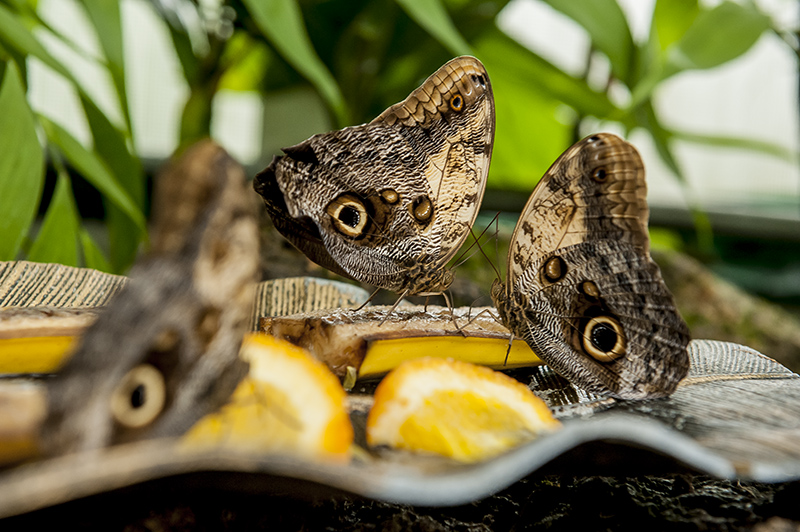
Caligo telamonius, called owl butterflies, are one of the species that feeds on the fruit our staff leave out daily for them to enjoy. Florida Museum photo by Sophia Zayas
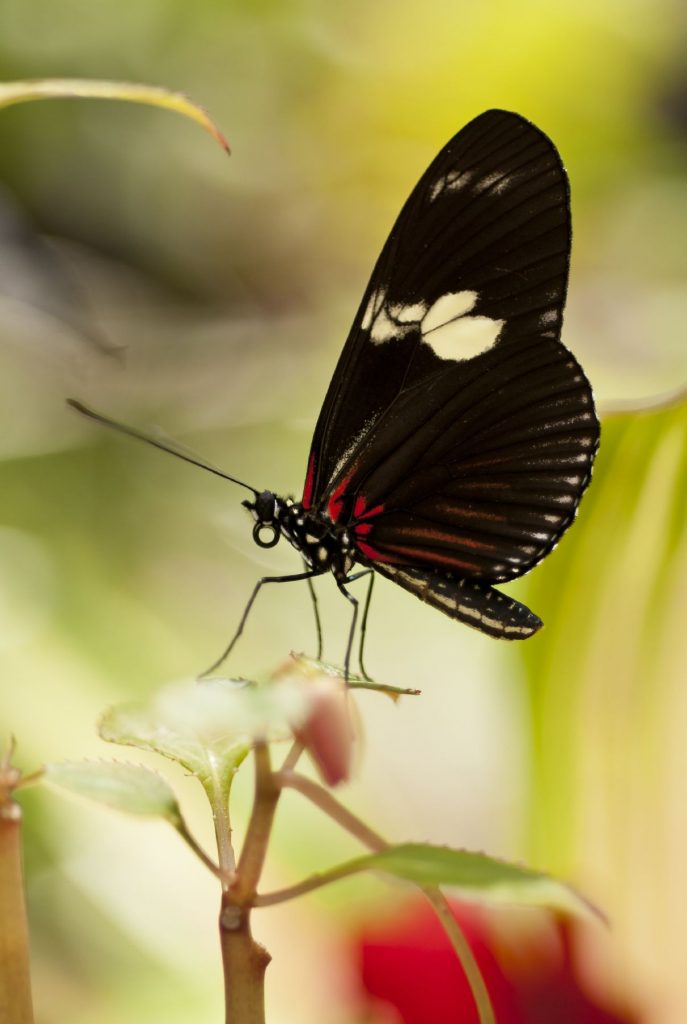
Butterflies in the exhibit are raised on butterfly farms around the world. This form of sustainable agriculture helps protect natural forest habitats from destruction and promote local economic growth. Florida Museum archive photo
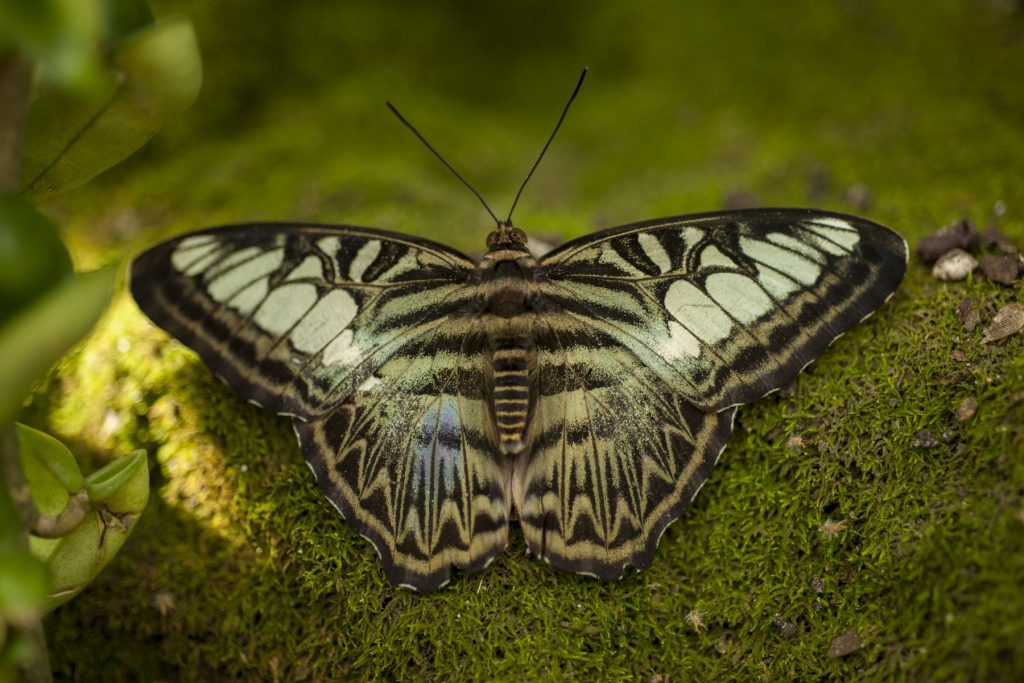
Parthenos sylvia, called a clipper, is native to South and Southeast Asia. Florida Museum photo by Kristen Grace
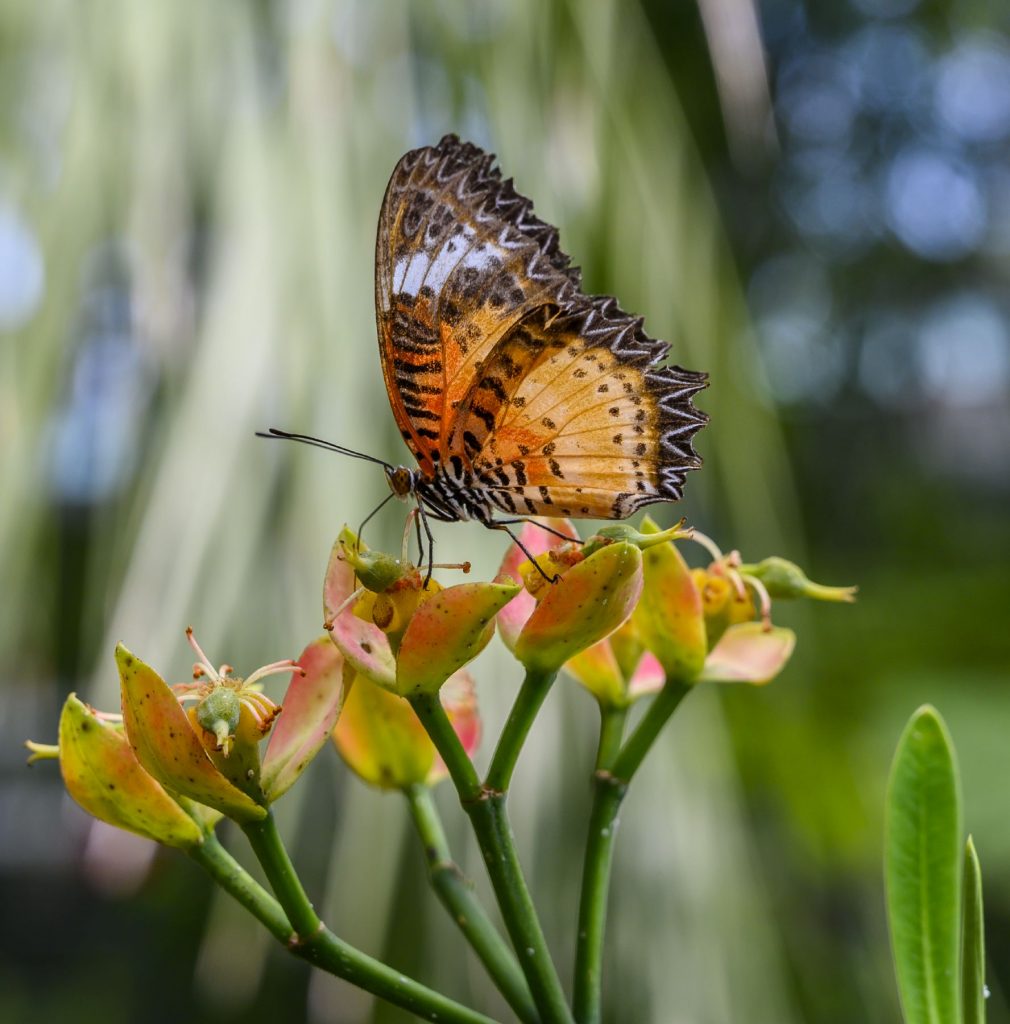
Leopard lacewing butterflies, Cethosia cyane, native to India through to southeastern China, are one of dozens of exotic species that have been displayed in the exhibit. Florida Museum photo by Jeff Gage
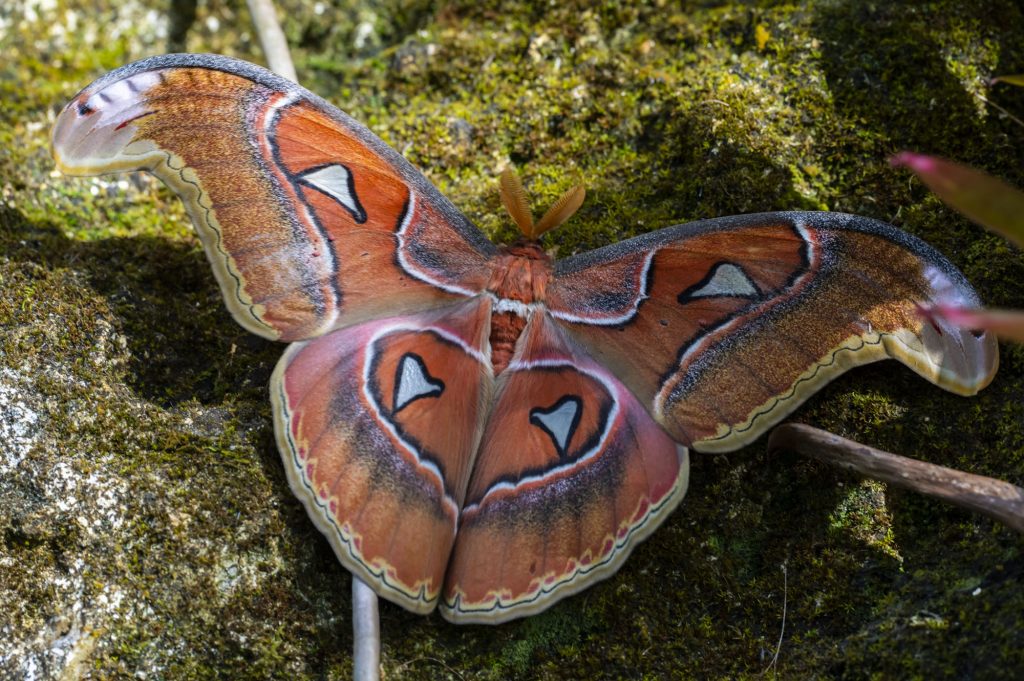
There are more than butterflies in the exhibit. Visitors can discover gorgeous moths like this Atlas moth. Florida Museum photo by Jeff Gage
The Butterfly Rainforest opened in August 2004. Today visitors of all ages enjoy experiencing the exhibit and its lush landscape, peaceful waterfalls, birds and more than 50 Lepidoptera species from around the world at any given time.
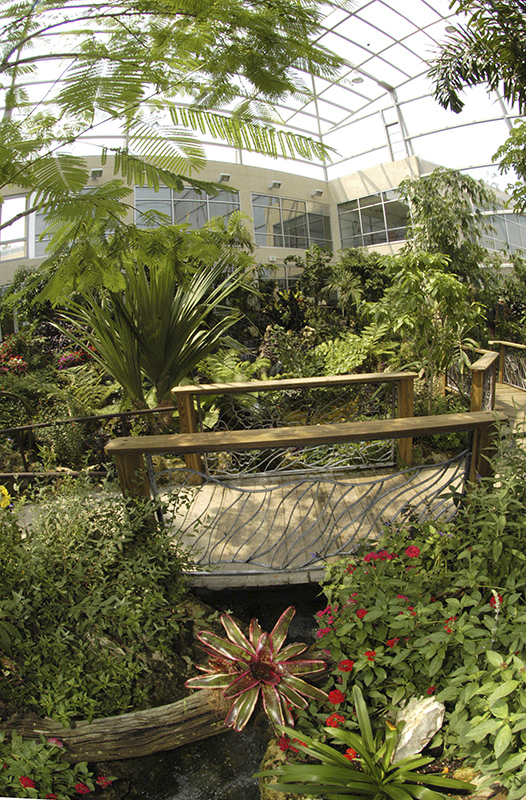
In 2004, the vivarium opened to visitors with a lush assortment of plants, water features and meandering paths. Florida Museum archive photo
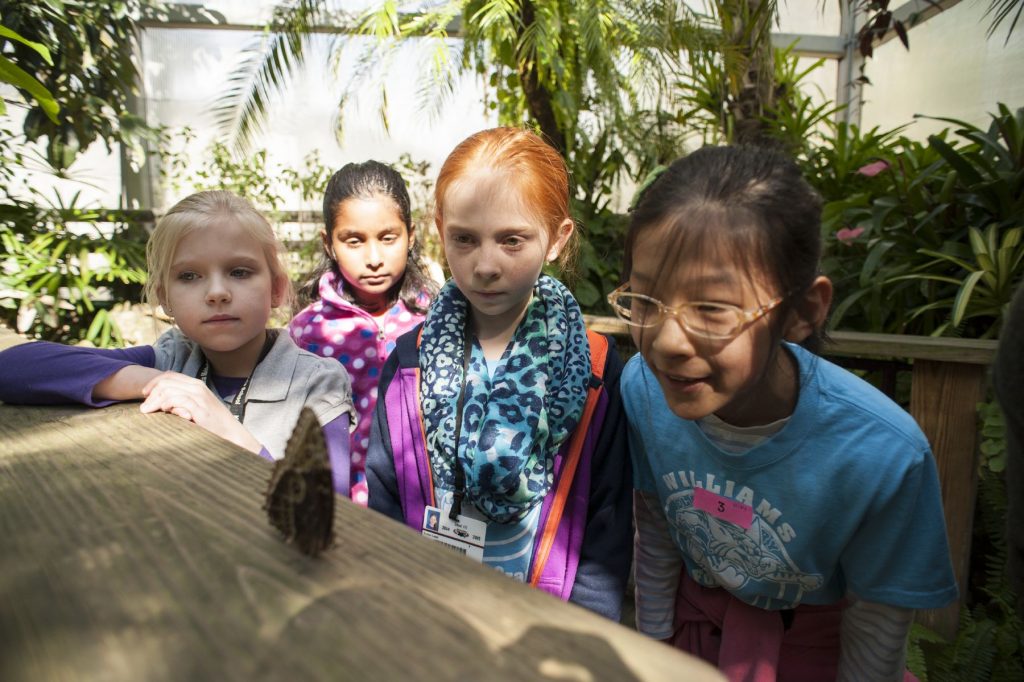
The Butterfly Rainforest offers a wonderful opportunity for kids to get up close to live butterflies and be inspired about our natural world. Florida Museum photo by Kristen Grace
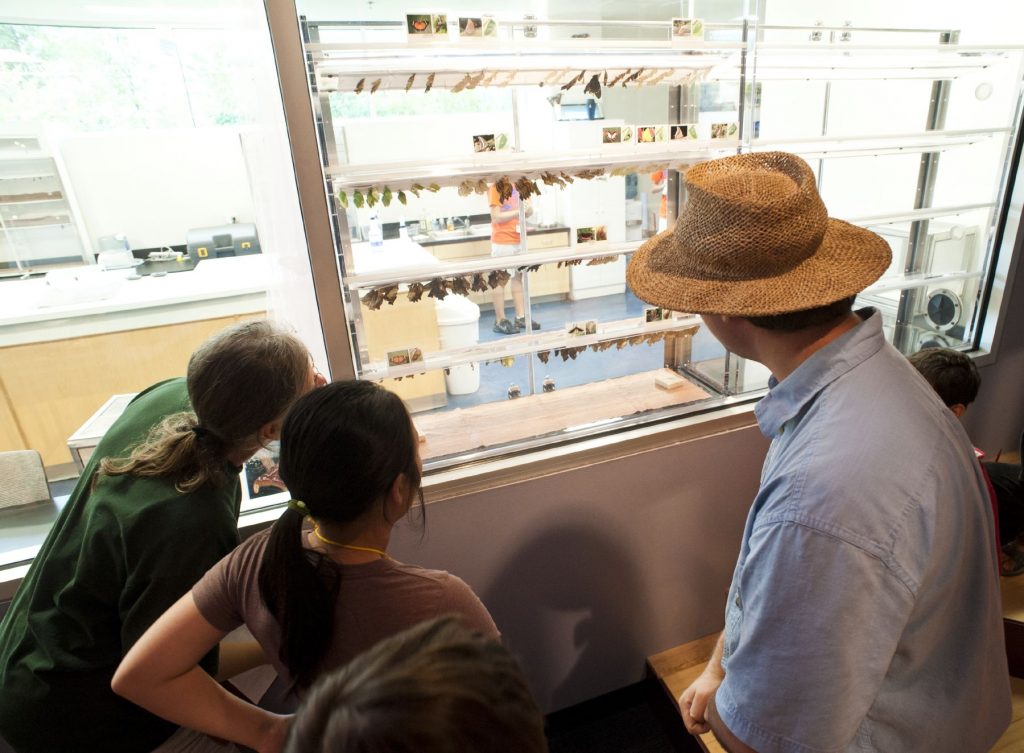
Visitors can check in on the chrysalids in our Rearing Lab in hopes of watching a butterfly emerge! There’s also a streaming webcam to watch from anywhere. Florida Museum photo by Kristen Grace
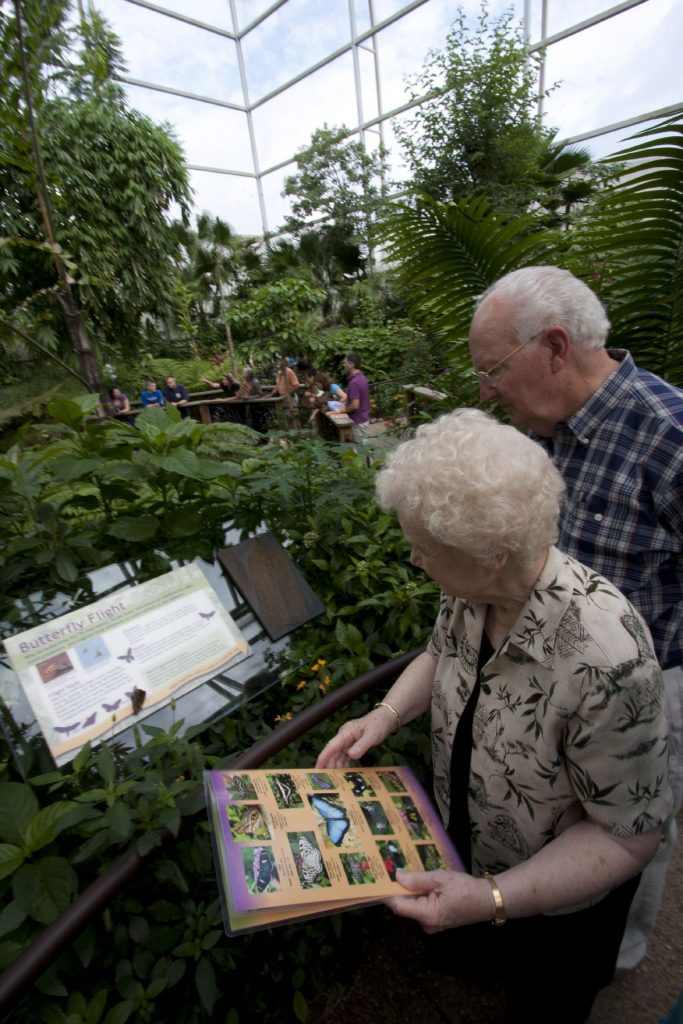
Group tours are popular with local organizations and nearby communities. The vivarium is wheel-chair accessible and docent-lead tours are available when scheduled in advance. Florida Museum photo by Eric Zamora
First, there were the designing stages.
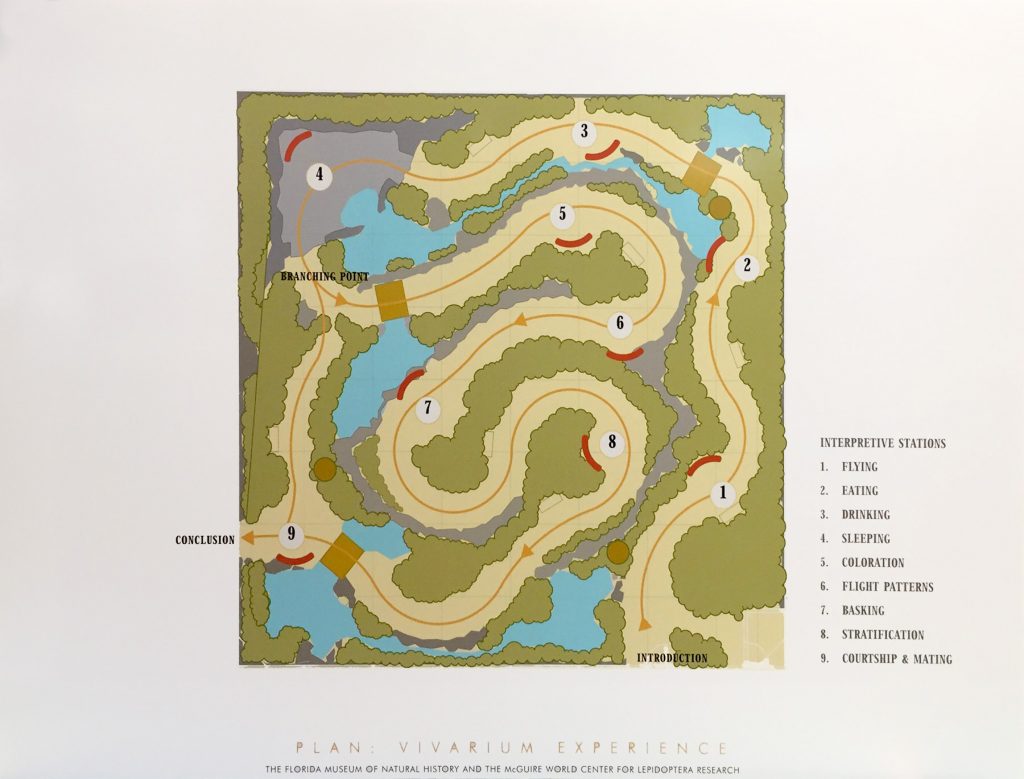
The initial plans for the vivarium focused on stops along the path where visitors could learn more about the behaviors and life stages of butterflies. Florida Museum archive photo
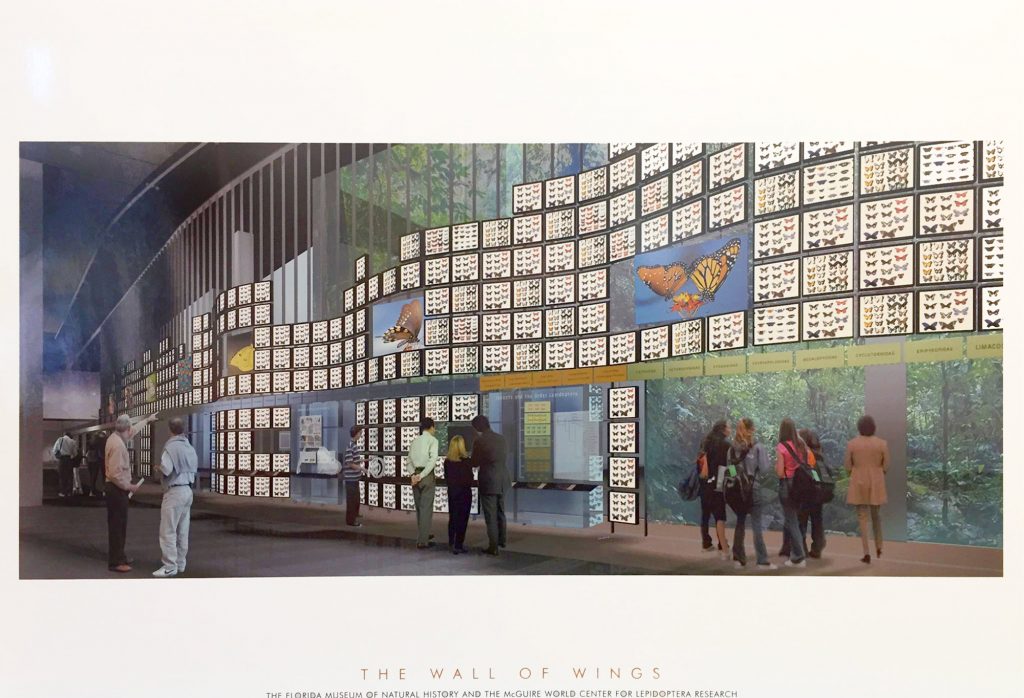
The artist’s rendering of the proposed ‘Wall of Wings’ was expanded slightly but remains true to the intention to feature hundreds of species of butterflies for visitors to explore. Florida Museum archive photo
The collections building and vivarium were constructed carefully alongside the existing Museum building, and then they were joined together. Finally, a ribbon was cut to celebrate the McGuire Center for Lepidoptera and Biodiversity opening.
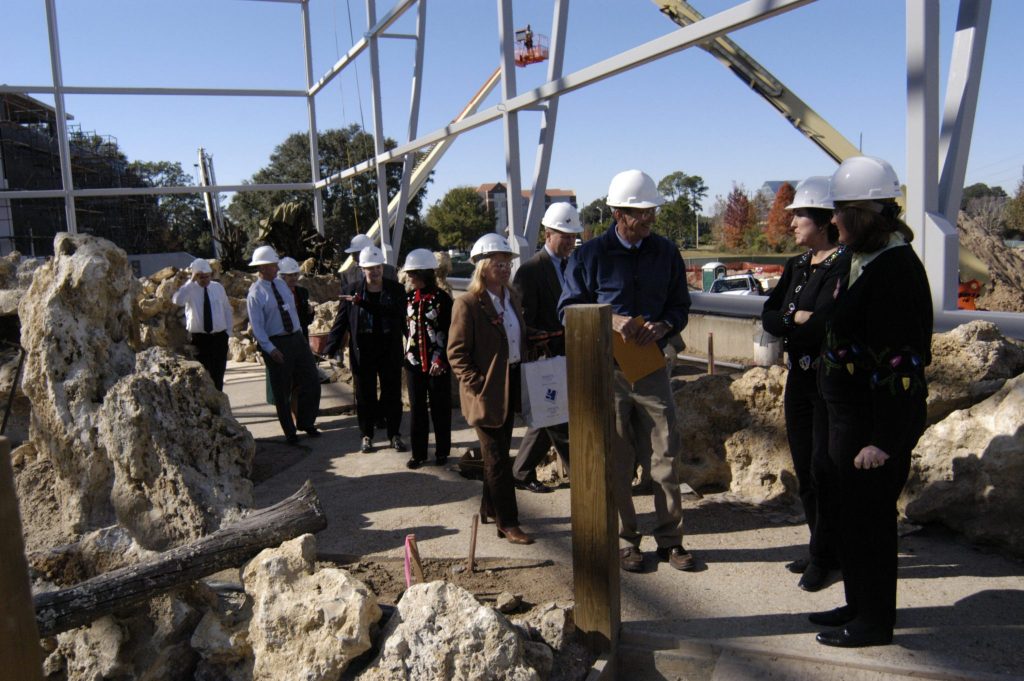
Florida Museum Associates Board members, led by Tom Emmel, tour the construction site of what was quickly becoming the Butterfly Rainforest exhibit. Florida Museum archive photo
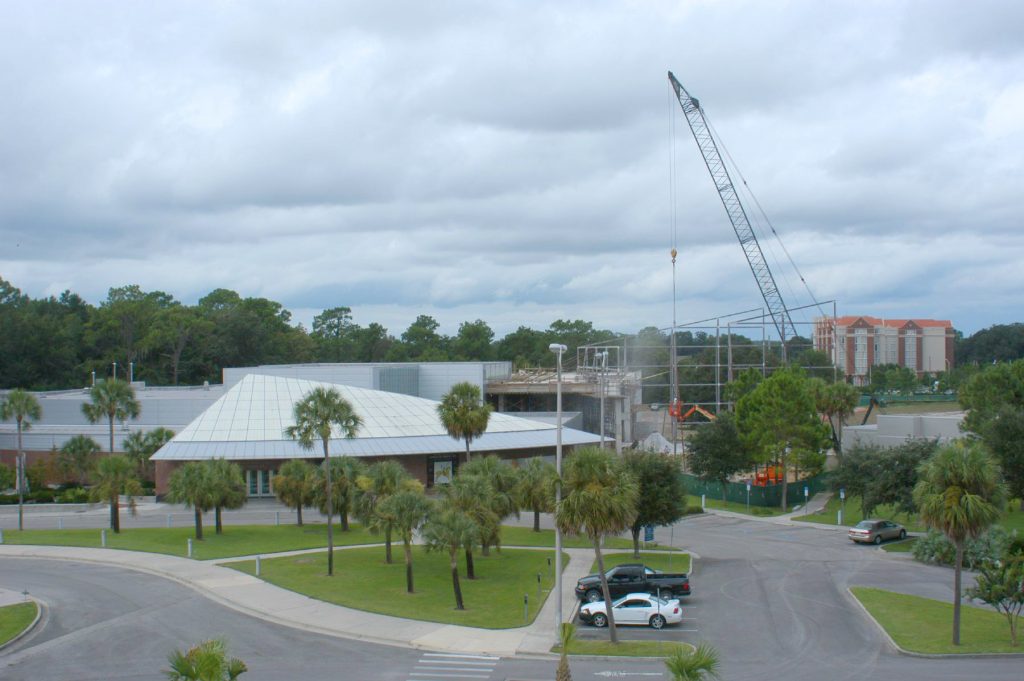
The McGuire Center for Lepidoptera and Biodiversity building and the Butterfly Rainforest vivarium were built alongside the existing Florida Museum at Powell Hall. Florida Museum photo by Jeff Gage
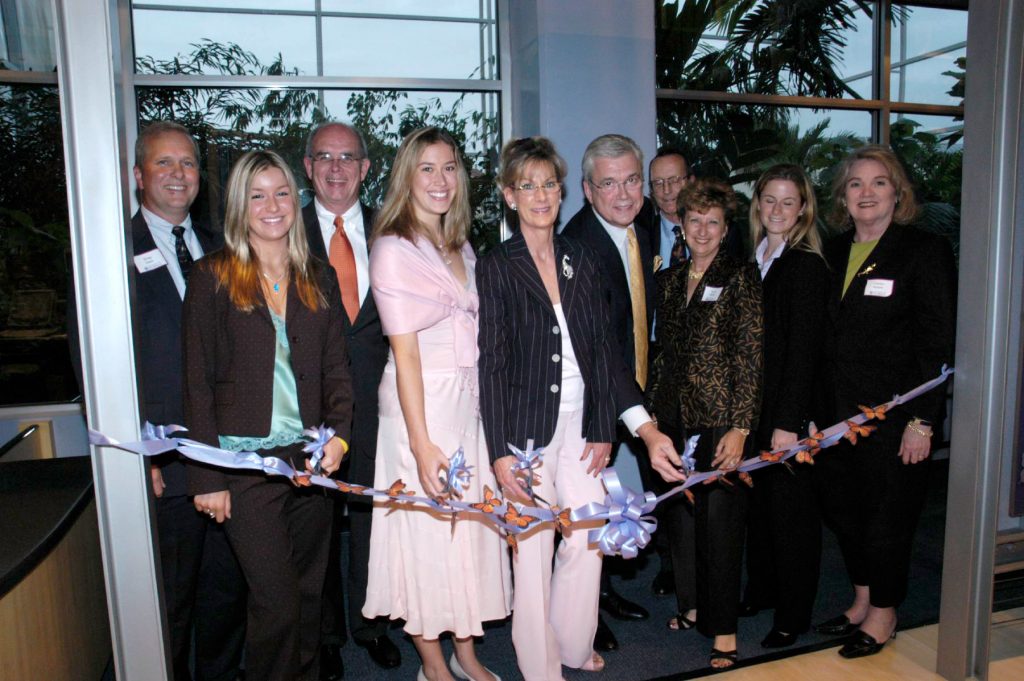
The 2004 ribbon cutting at the newly opened McGuire Center was attended by VIPs such as then-UF President Bernie Machen, Bill McGuire, Florida Museum Director Doug Jones, and McGuire Center Founding Director Tom Emmel. Florida Museum photo by Jeff Gage
And since then, millions of visitors have had the opportunity to learn about butterflies and moths and see chrysalides and cocoons up close.
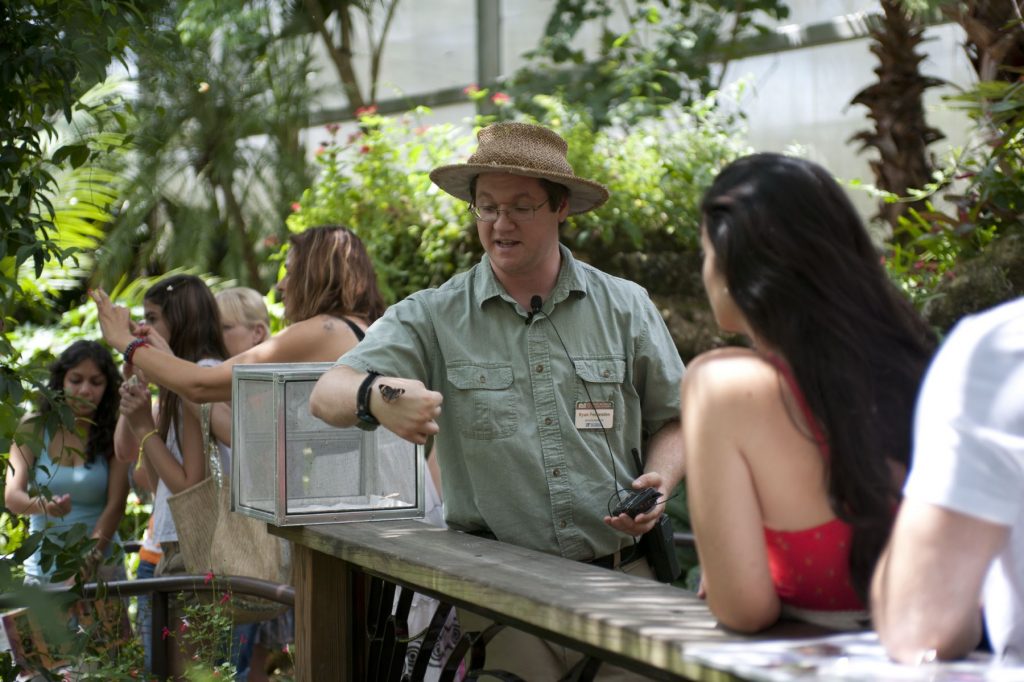
Knowledgeable staff present daily butterfly spotlights and talk with visitors about the many species in the exhibit. Florida Museum photo by Kristen Grace
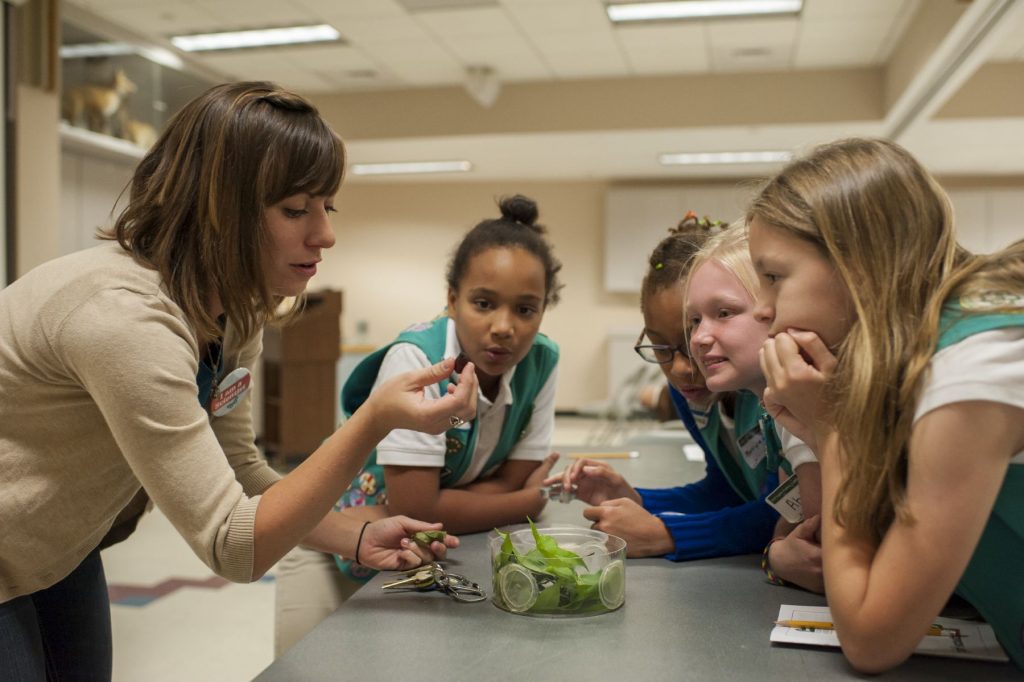
Scouts and other groups visit to work with scientists to learn about butterflies, their life cycle and the role they play in our ecosystem. Florida Museum photo by Kristen Grace
Some of our staff members have been here since the beginning. Jaret Daniels, director of the Florida Museum’s McGuire Center, released some of the first butterflies into the exhibit in 2004 and he still takes visitors on tours to talk butterflies.
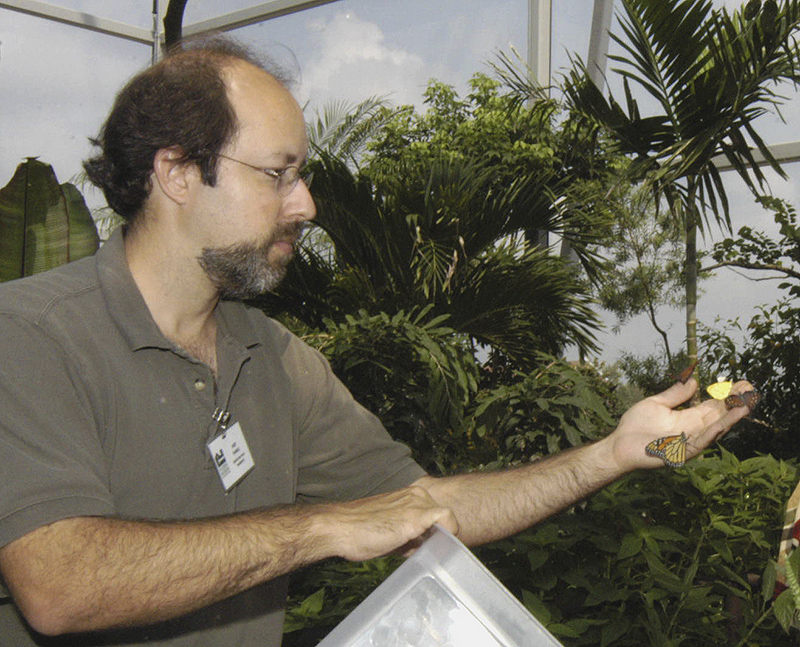
In August 2004, Jaret Daniels released 100 butterflies of eight different species into the Butterfly Rainforest, inaugurating the new exhibit with its first Lepidoptera residents. Florida Museum photo by Jeff Gage
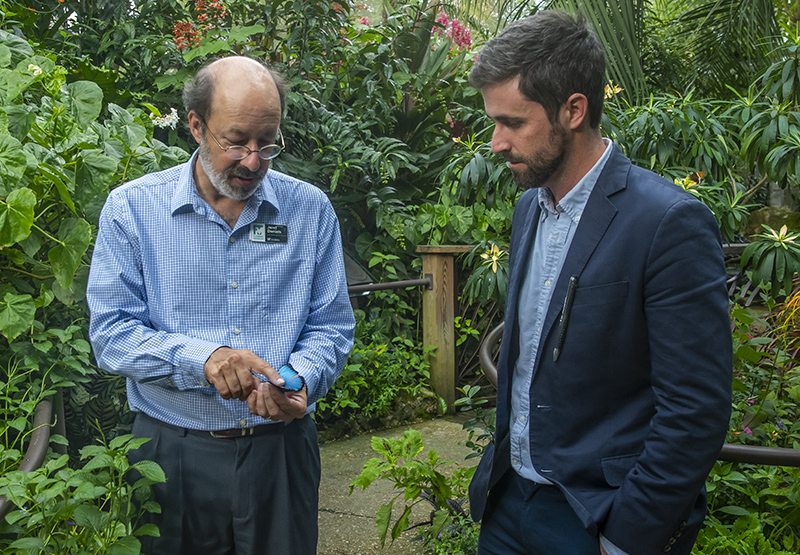
Jaret Daniels carefully holds a Blue morpho butterfly for Peter Brannen, guest speaker at a member reception for the Permian Monsters exhibit. Florida Museum photo by Jeff Gage
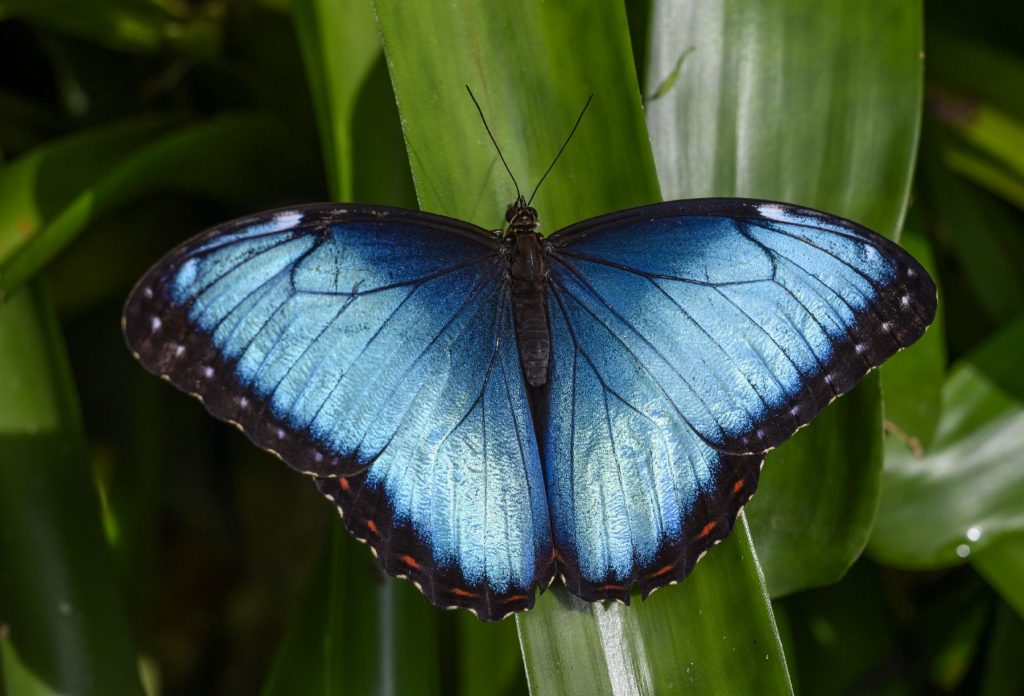
Blue morpho butterflies, Morpho helenor peleides, are famous for their shimmery blue wings, a result of microstructures on their wing scales rather than pigment. Florida Museum photo by Jeff Gage
The ever-changing North Central Florida weather brings new challenges to the exhibit daily. Tropical plants must be covered in frigid temperatures so they don’t freeze, and staff collect all the butterflies. Don’t worry, though! They’re still alive, but their bodies must warm before they can take flight.
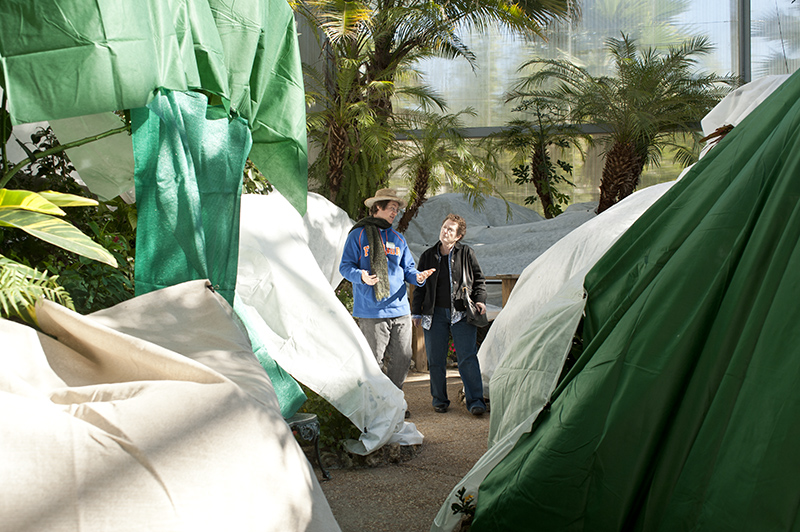
When temperatures drop and we cover many of the plants in the vivarium to protect them and the butterflies, the Butterfly Rainforest staff often offer special tours instead of the usual exhibit admission. Florida Museum photo by Kristen Grace
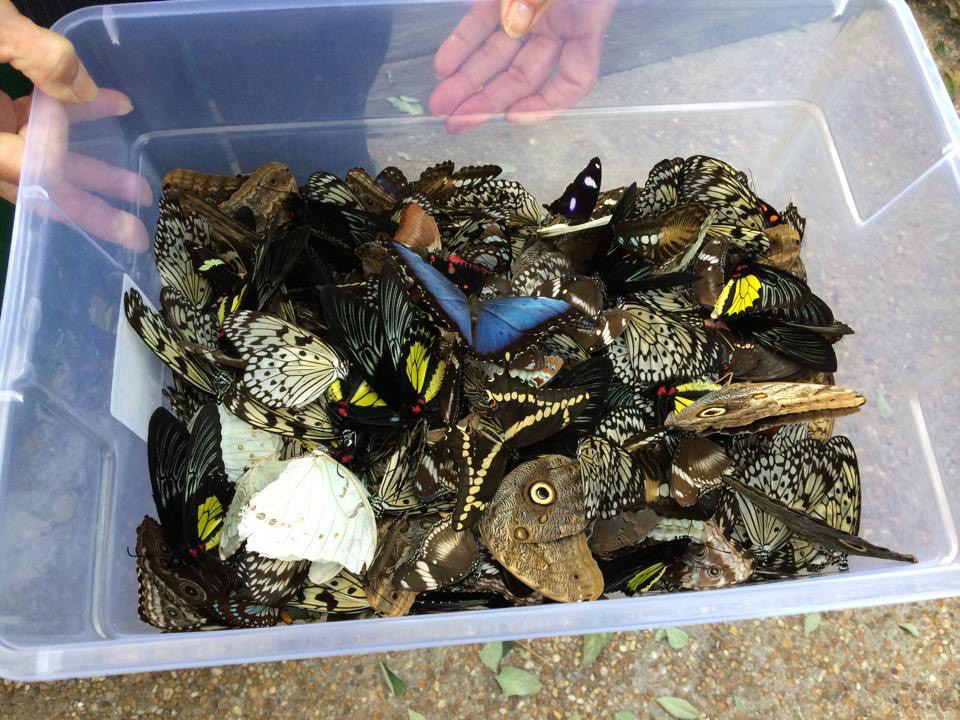
Tropical butterflies generally begin flying when the air temperature reaches 65 degrees. Our caring Rainforest staff do their best to keep them safe in extreme weather so they can fly again when temperatures rise. Florida Museum photo by Kaitlin Gardiner
When hurricanes threaten our area, the dedicated staff also comb the exhibit to collect and save as many butterflies as possible. Photos of employees preparing for Hurricane Irma caught the eye of Buzzfeed, which published the article “Butterflies Were Tenderly Saved Before Hurricane Irma Hit.”
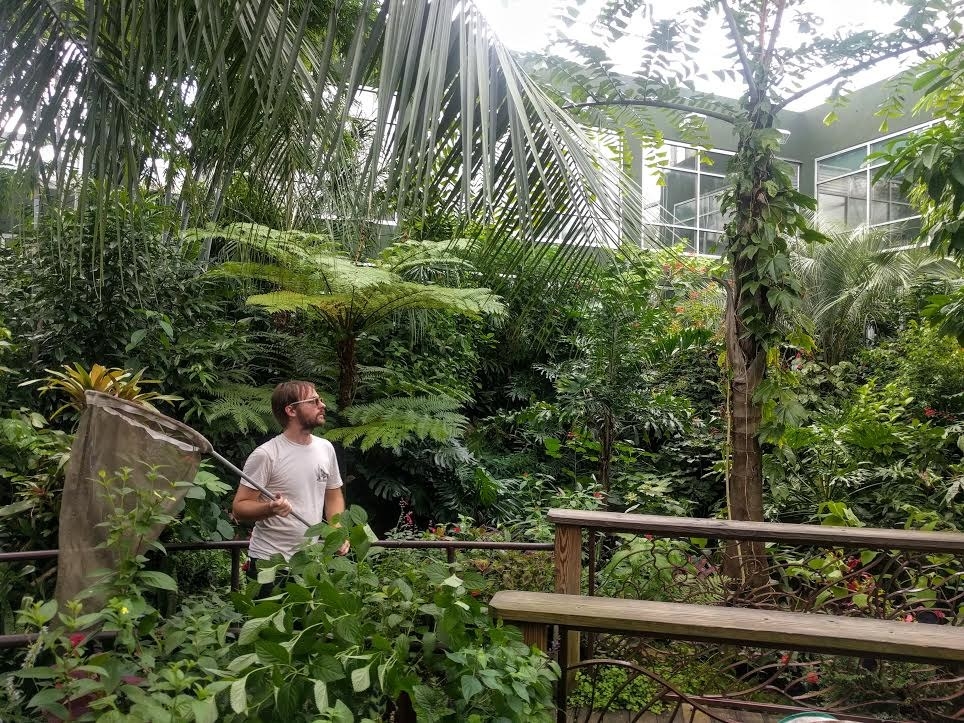
Butterfly Rainforest staff collected butterflies in the exhibit prior to Hurricane Irma making landfall in 2017. Florida Museum photo by Geena Hill
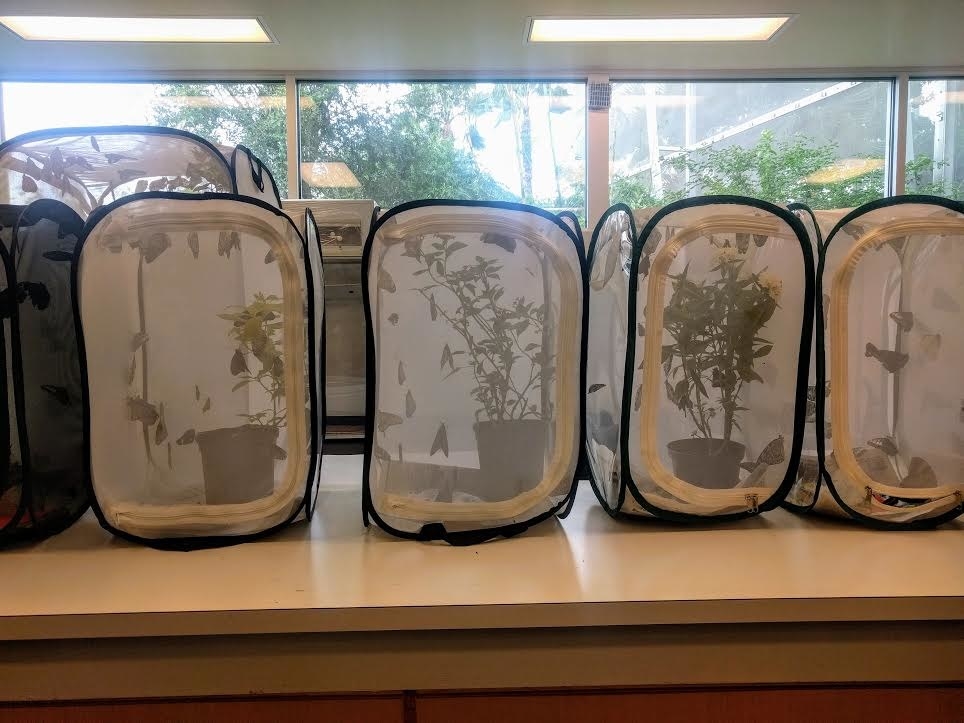
The butterflies from our Butterfly Rainforest exhibit weathered Hurricane Irma in 2017 in enclosures in our labs. Florida Museum photo by Geena Hill
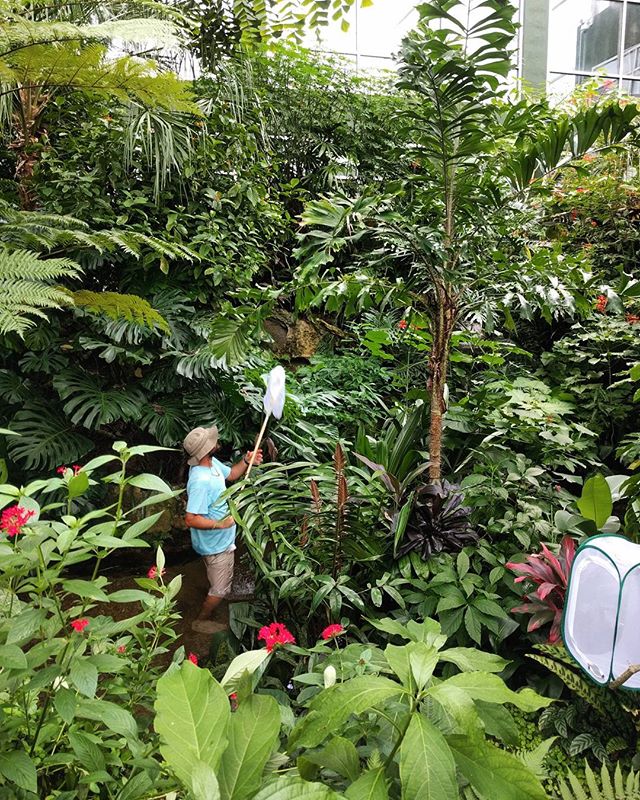
Butterfly Rainforest staff collected butterflies prior to Hurricane Irma making landfall in 2017. Florida Museum photo by Geena Hill
The continued support of donors, volunteers and staff have kept the the Museum and the butterflies flying throughout the years.
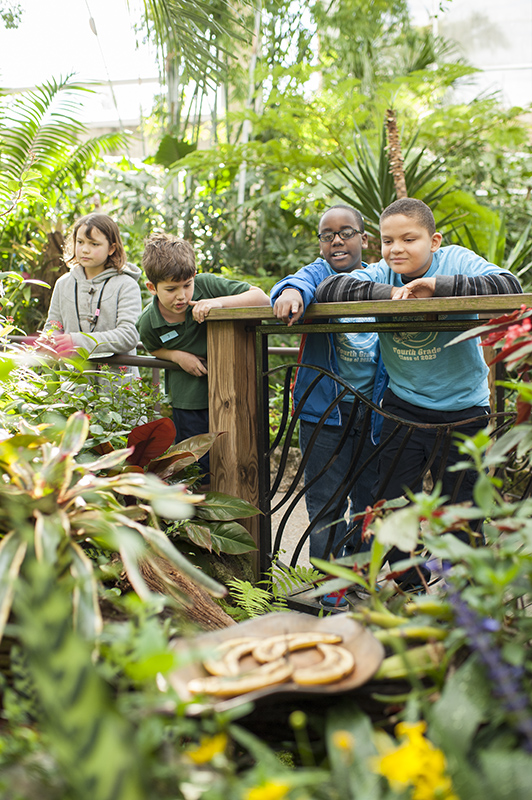
One of our scientist’s school programs brings kids into the Butterfly Rainforest, and then goes to their school to plant a butterfly garden to help develop a deeper connection to our natural world. Florida Museum photo by Kristen Grace
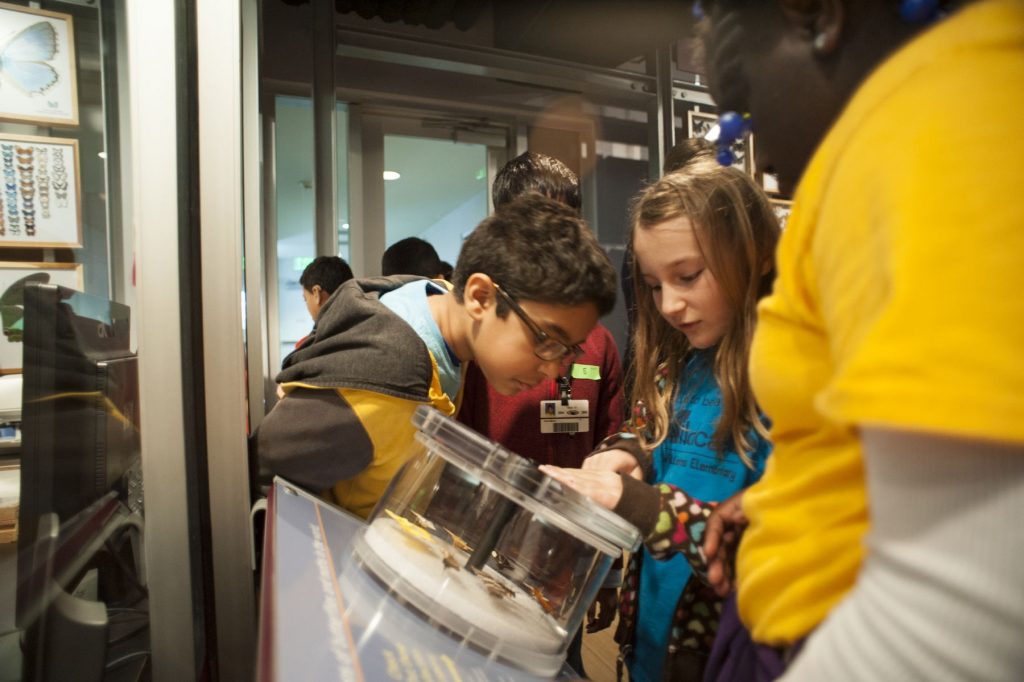
In addition to visiting the exhibit, school kids are shown our lab space to explore how scientists study butterflies with a goal of conservation of imperiled species. Florida Museum photo by Kristen Grace

The Common Buckeye, Junonia coenia, is especially popular to photograph among UF students because it’s orange and blue. UF students also receive free exhibit admission. Florida Museum photo by Kate Martin
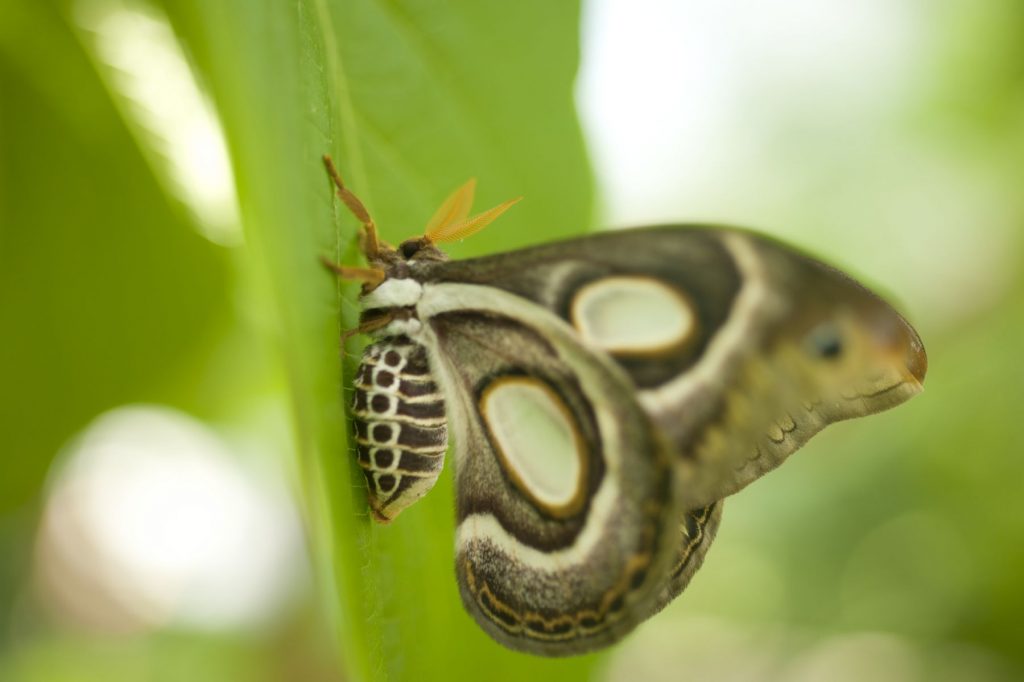
The White Ringed Atlas moth, Epiphora mythimnia, is one of the species of large moths found in the vivarium. Florida Museum photo by Kristen Grace
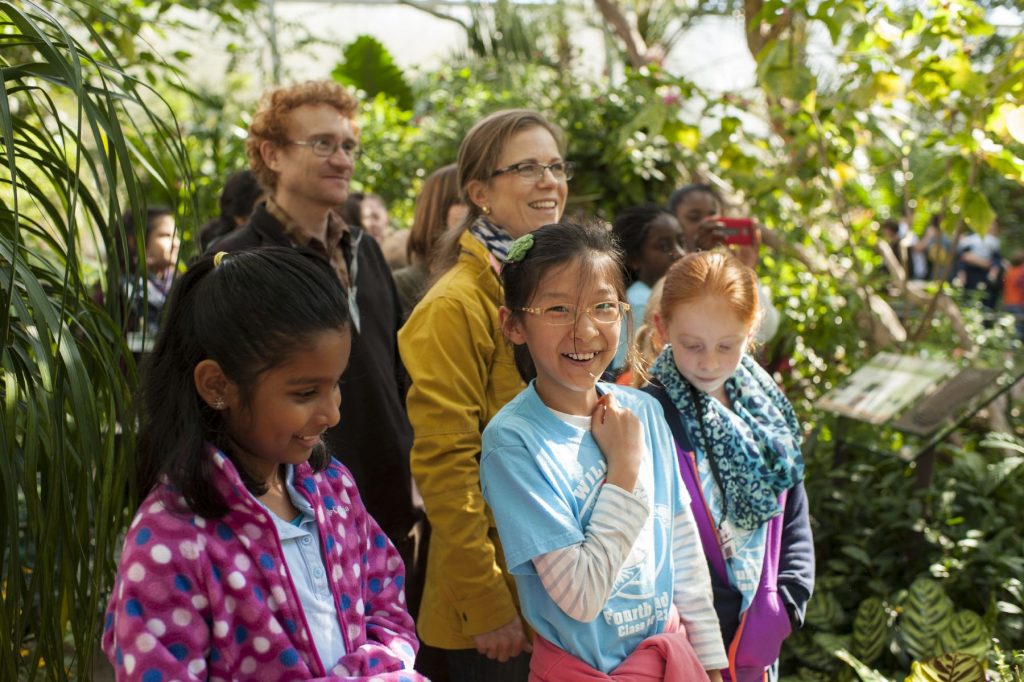
Bringing school kids in to experience nature and tell the story of the butterfly life cycle is an impactful way to inspire them to learn about our natural world. Florida Museum photo by Kristen Grace
Don’t let more time fly by before stopping in to explore the Butterfly Rainforest exhibit!
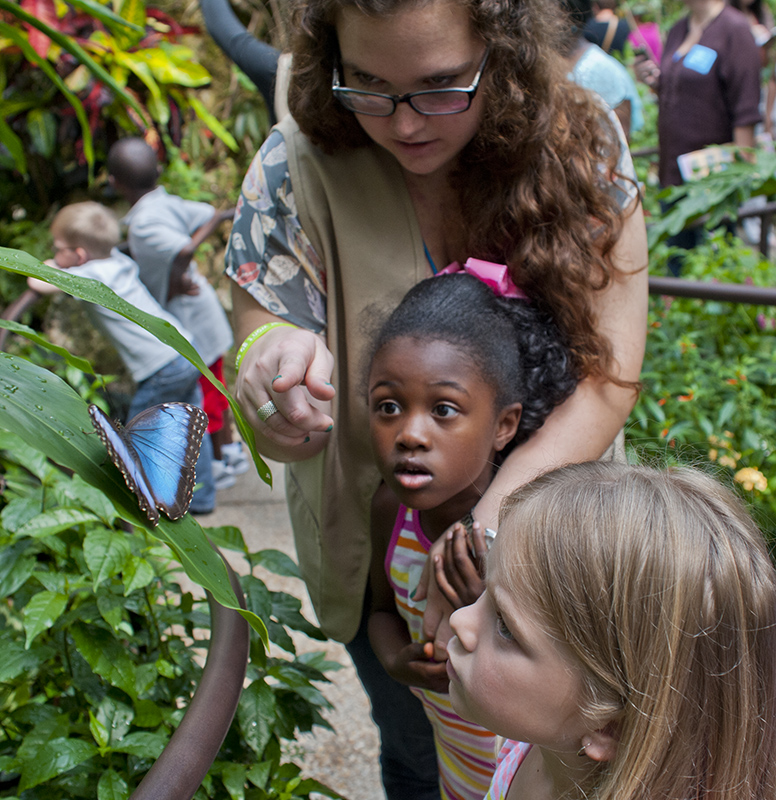
Museum docents accompany school groups through the exhibit to explore butterflies, and sometimes learn to be less nervous around them. Florida Museum photo by Jeff Gage

Leopard lacewing butterflies, Cethosia cyane, native to India through to southeastern China, are one of dozens of exotic species that have been displayed in the exhibit. Florida Museum photo by Jeff Gage
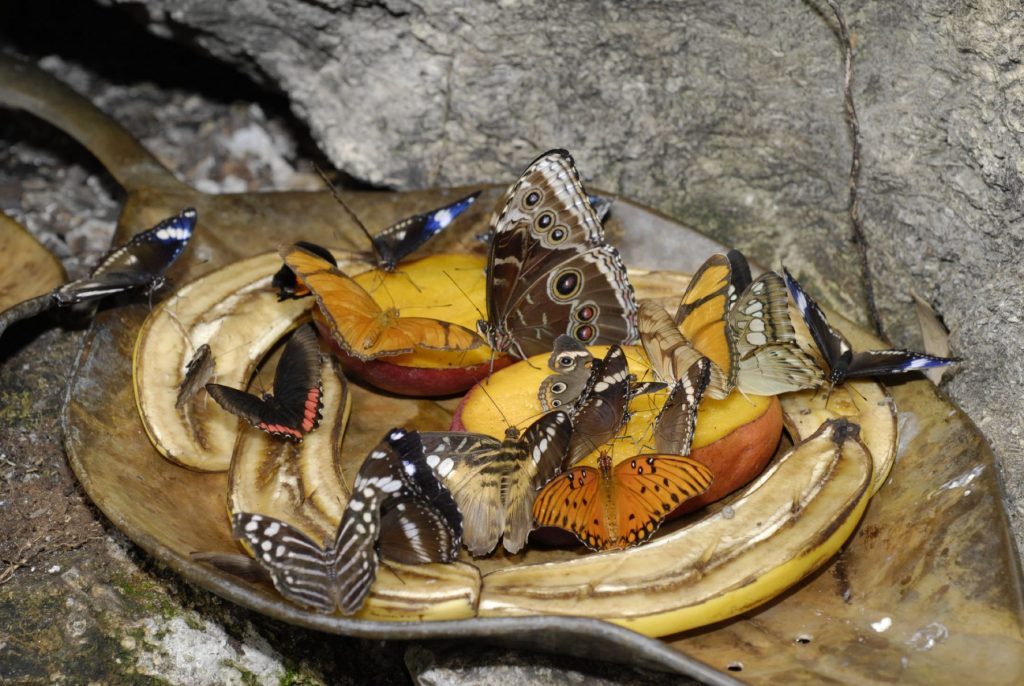
Some popular butterflies that have been displayed in the exhibit include Great eggflies, Julias, Gulf fritillaries, Blue morphos, Common buckeyes, Clippers and Red rims. Florida Museum photo by Jeff Gage
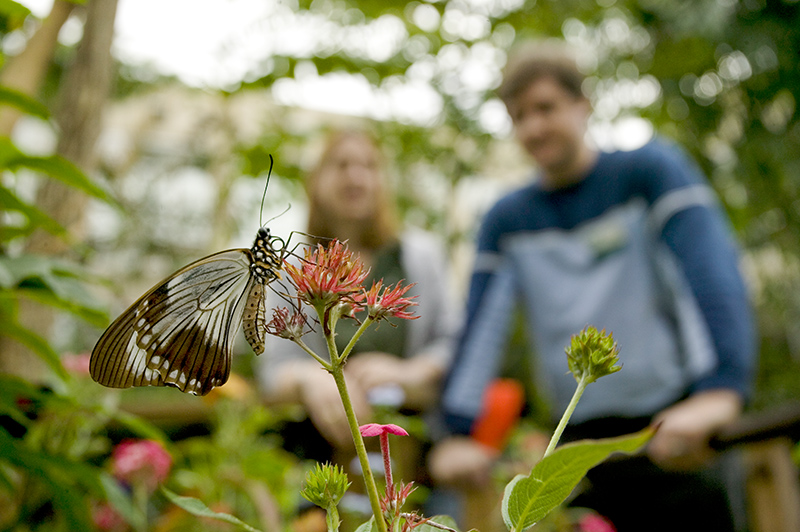
A Mocker swallowtail, Papilio dardanus, native to parts of Africa, feeds on a pentas flower in the vivarium. Florida Museum photo by Eric Zamora

Butterflies in the exhibit are raised on butterfly farms around the world. This form of sustainable agriculture helps protect natural forest habitats from destruction and promote local economic growth. Florida Museum archive photo
Text and concept by Gillian Sweeney































